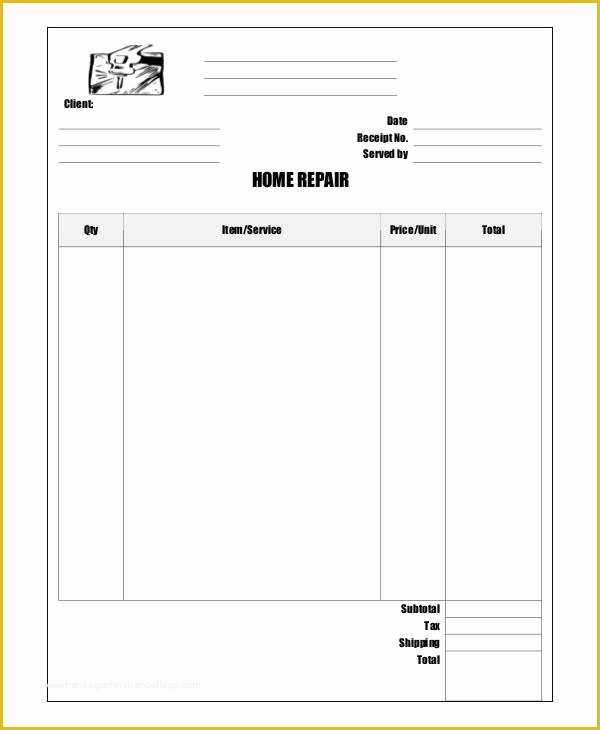
- #Average sales receipts for auto repair shops driver
- #Average sales receipts for auto repair shops plus
- #Average sales receipts for auto repair shops series
Like gross profit dollars, gross profit percentage can be calculated by profit center, job, day, week, month or year.
#Average sales receipts for auto repair shops driver
Gross profit percentage: This is a key driver behind many KPIs used to measure performance and is a statement of gross profit dollars converted to a percentage. It may also be calculated by the individual job.

Gross profit may be calculated by profit center or overall. Gross profit dollars: The amount of money left over after subtracting the direct cost of the product (the cost of labor, parts, paint, sublet and anything else that went directly into the repair) from the sale. Key Performance Indicator (KPI): KPIs are numbers, formulas or ratios generated from the P&L or other business data which can be used to compare one shop’s performance to another shop’s or a group of shops’.

Bankers use formulas generated from the numbers on a balance sheet to determine if a company is strong enough to obtain a loan.
#Average sales receipts for auto repair shops plus
Total assets must equal (balance) with total liabilities plus net worth. The balance sheet lists assets, liabilities and net worth for the company. That makes this an unloaded P&L, the most common format in the collision repair industry.īalance sheet: The balance sheet is a statement of what the company owns and owes, as of a moment of time. In this sample, all payroll-related benefits and taxes are carried as overhead (“below the line”). Note how overhead expenses are listed individually. The rule is that for every sales category, you must have a corresponding cost category. Note that cost of goods sold (direct cost) is broken into the exact same categories. Notice how sales are broken into separate categories, or profit centers. Check out the sample P&L for a shop doing about $2 million per year. It’s important to have a properly formatted P&L. The basic structure of the P&L is simple: Total Sales - Cost of Goods Sold = Gross Profit - Overhead = Net Profit The P&L accounts for revenue and expense by department, or profit center, and overhead over a period of time, usually a month and year. Profit and loss statement or P&L (aka income and expense, operating statement, income statement, etc.): The P&L is the basic financial statement for tracking how the business is doing from a sales and expense standpoint. In my consulting work, I’ve seen many financials that were something in between cash and accrual. Review your financials with your accountant to make sure your financial statements are “fully accrual based.” Collision repair facilities have accounts receivable and payable, work-in-process, reserves for taxes due and many other items that are recognized in accrual accounting but not in cash accounting. Accrual accounting recognizes sales when the vehicle is delivered to the owner and expenses when the invoice is received.įor collision repair, accrual is the only way to go. accrual accounting: There are two accepted methods of accounting, cash and accrual.Ĭash accounting recognizes sales when the check is deposited and expenses when the payments are made. The best way to understand your financials is with some basic definitions.Ĭash accounting vs. I strongly suggest you pursue a much deeper understanding of your financials than what can be presented in this article. Remember that this is a “Back to Basics” article. We’ll also spend a few moments with the balance sheet as well as consider some suggestions for using a management system. In this article, we’ll look primarily at the profit and loss statement and some Key Performance Indicators (KPIs). Remember, bad financials can put us out of business. We could be the best repair shop for miles in any direction, but if the number at the bottom of a financial statement is red or has brackets around it for any extended period of time, we’ll be closed by our creditors.Īs body shop owners and managers, we need to spend as much time reviewing and understanding our financials as we do understanding unibody construction and repair, refinish systems and negotiations with insurance adjusters. But the end result of everything we do is how big or small the number is at the bottom of our financial statement. Think of it this way: Everything we do in our business is reflected in our financial statements.

How well we do in business is measured by the company financial statements. But boil it down, and the fact is that we are in business. Most of us are really good at repairing collision-damaged vehicles. Now, it’s time to understand your financials better.
#Average sales receipts for auto repair shops series
In the Back to Basics series that began in the November 2010 issue of BodyShop Business, we’ve looked at marketing (everything you do to bring a customer to your door), sales (getting the customer to sign the RO), damage analysis and production concepts. See Part 1 (Marketing), Part 2 (Selling), Part 3 (Damage Analysis) and Part 4 (Track KPIs).


 0 kommentar(er)
0 kommentar(er)
